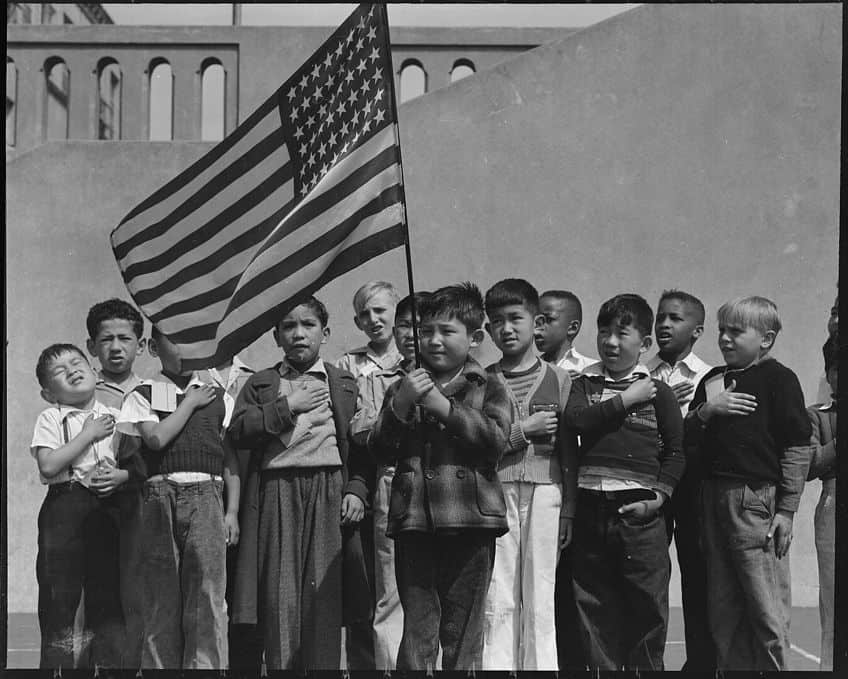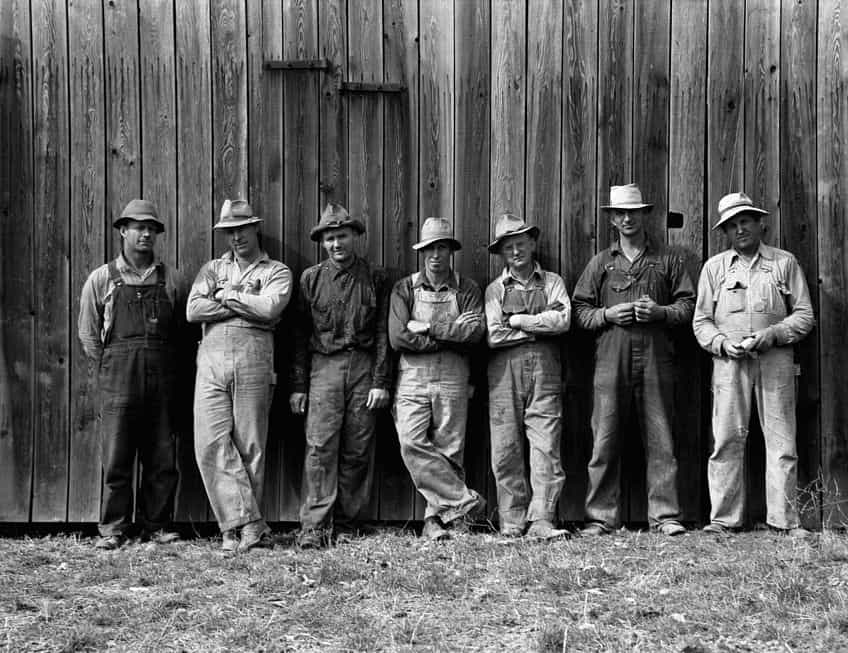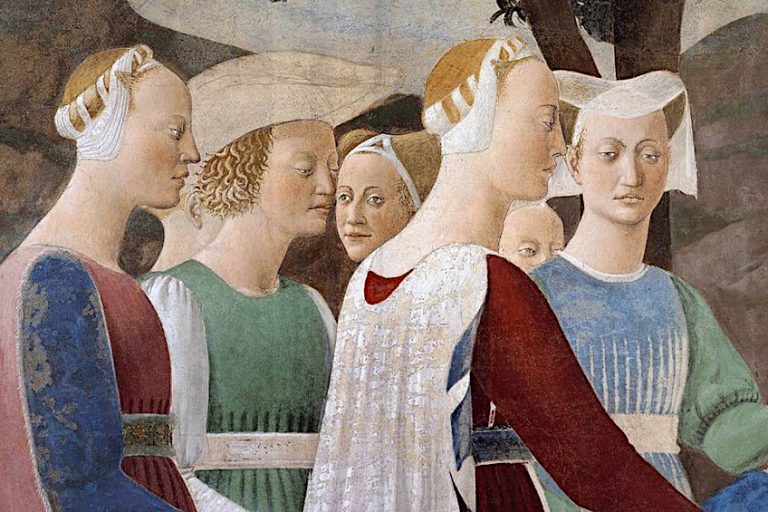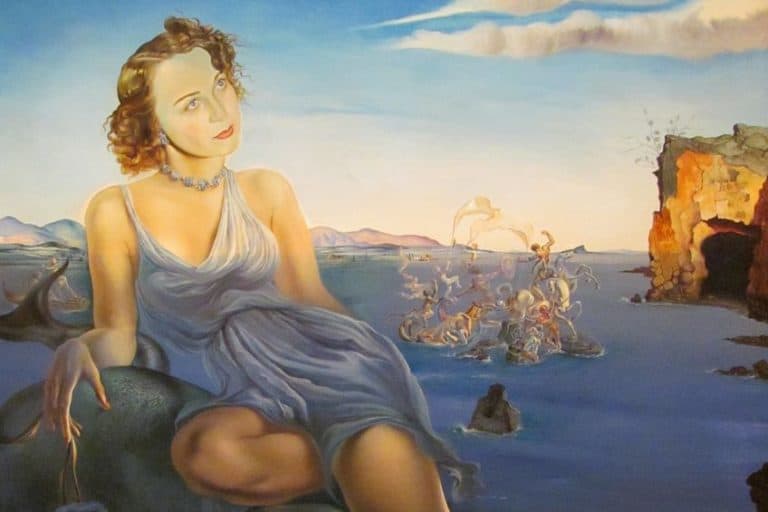Dorothea Lange – Dorothea Lange Photography
Dorothea Lange (1895 – 1965) is a renowned figure in the world of art and photography, known for her powerful and poignant works that have left a lasting impact on the collective memory. This article delves into the life, art, and legacy of Dorothea Lange. We will look at Dorothea Lange artworks, her pioneering approach to photography, her contributions to the field of art history, and her most famous photographs that have made her a celebrated figure in the world of art and social activism. The article will answer the following questions: “who is Dorothea Lange?”, “when was Dorothea Lange born?”, “where was Dorothea Lange born?”, and “what is the most famous photo of Dorothea Lange?”.
Who Is Dorothea Lange?
| Date of Birth | 26 May 1895 |
| Date of Death | 11 October 1965 |
| Country of Birth | America |
| Art Movements | Social realism |
| Genre/Style | Modern art |
| Mediums Used | Documentary photography |
| Dominant Themes | The Great Depression, lack of work, war, portraits of poverty, beauty, and desolation |
Dorothea Lange’s early career was marked by her deep empathy for her subjects and her dedication to using photography as a powerful tool for social change. Her contributions to the field of art history and photography, including her co-founding of Group f/64 and her work for the Office of War Information, solidified her as a pioneering figure in American documentary photography. Let us look more closely at the life and art journey of this artist.

Early Life, Training, Influences, and First Artworks
Dorothea Lange was born on May 26, 1895, in Hoboken, New Jersey, to second-generation German immigrants. She contracted polio at the age of seven, which left her with a lifelong limp, but it did not deter her passion for creativity. Lange’s family moved to New York City when she was 12, and she developed an early interest in photography through her father’s love for the medium. In 1907, her father abandoned the family, and her mother supported Lange and her younger brother by working as a librarian.
Lange went on to study photography at the renowned Wadleigh High School in New York City and later at Columbia University.
She became a portrait photographer and opened her own successful portrait studio in San Francisco in 1918. Her early influences included the work of Arthur Wesley Dow (1857-1922), a leading figure in the Arts and Crafts movement, whose emphasis on composition and form would shape Lange’s photographic style. Lange’s first artworks were primarily portraits, which garnered her a reputation as a skilled and sensitive photographer. Her early photographs reflected her deep empathy for her subjects and her keen observation of the human condition. However, it was not until the Great Depression in the 1930s that Lange’s work would take a significant turn and become a powerful tool for social change.

Dorothea Lange Photography: Recognition, Fame, and First Major Exhibition
In the early 1930s, Lange began documenting the effects of the Great Depression on ordinary Americans, particularly the struggles of migrant workers, sharecroppers, and displaced families. Her photographs captured the harsh realities of poverty, unemployment, and homelessness, revealing the human suffering that was widespread during this tumultuous period.
In 1935, Lange was recruited by the Resettlement Administration, a government agency created to address the social and economic impact of the Depression, to document the living conditions of migrant workers in California.
Her photographs from this period, such as White Angel Breadline (1933) and Migrant Mother (1936), would become some of her most iconic works, capturing the desperate circumstances faced by migrant workers fleeing the Dust Bowl. Lange’s photographs gained recognition for their raw and compassionate portrayal of the human experience, and she quickly gained national and international fame. Her work was featured in prominent publications such as Life magazine and The New York Times, and she became one of the most well-known documentary photographers of her time.

In 1937, Lange had her first major solo exhibition at the San Francisco Art Association, which featured her photographs from the Depression era. The exhibition was a critical success and further solidified Lange’s reputation as a groundbreaking photographer who used her art to raise awareness about social injustices and advocate for change.
Dorothea Lange’s Impact on Art History: Documenting Humanity, Advocacy, and Social Change
Dorothea Lange, renowned for her powerful and poignant photographs, has left an indelible mark on the history of art. Her contributions to the field of photography, particularly in the realms of documentary photography and social activism, have had a profound influence on art history, shaping the way we perceive and understand human life, advocacy, and social change.

Giving Voice to the Voiceless
Lange’s photography is synonymous with sympathy and humanity. Her ability to capture the raw emotions and struggles of individuals during some of the most challenging times in American histories, such as the Great Depression and World War II, is unparalleled. Through her lens, Lange revealed the human stories behind the statistics and brought to light the hardships faced by marginalized communities, including migrant workers, sharecroppers, and Japanese Americans interned during the war.
Her photographs were not just visual records but powerful narratives that told the stories of ordinary people, giving voice to the voiceless and shining a light on social injustices.
Beyond being a documentary photographer, Lange was also an advocate for social change. Her photographs were not merely a passive observer of the world, but a form of activism that aimed to raise awareness, provoke empathy, and bring about positive change. Lange used her art as a tool for advocacy, shedding light on issues such as poverty, inequality, and injustice, and challenging the status quo. Her photographs served as a visual call to action, urging viewers to empathize with the subjects of her photographs and take action to address the social issues depicted.

The Evolution of Documentary Photography
Dorothea Lange’s artworks also had a significant impact on the evolution of documentary photography as an art form. Her innovative approach to capturing the human condition, her use of composition and form to convey emotions and tell stories, and her ability to bring together the personal and the political in her photographs broke new ground in the field of documentary photography. Lange co-founded Group f/64, a collective of photographers known for their sharp focus and precise rendering of detail, which revolutionized the aesthetic and technical aspects of photography.
Her contributions to Group f/64, along with other renowned photographers such as Ansel Adams (1902-1984) and Edward Weston (1886-1958), helped shape the direction of modern photography and influence the evolution of art history.
The Role of Women in Society
Lange’s impact on art history extends beyond her photography. She also worked for the Office of War Information during World War II, where she documented the home front and the contributions of women to the war effort. Her work during this period highlighted the role of women in society, challenging traditional gender roles and advocating for gender equality. Lange’s photographs were not only a visual record of the time but also a form of social commentary, highlighting the importance of representation and inclusivity in art and society.

Lange’s influence on art history can be seen in the countless artists and photographers who have been inspired by her work. Her legacy lives on through her powerful and enduring photographs that continue to captivate audiences and provoke conversations about the human condition, social justice, and the power of art as a vehicle for change. Lange’s contributions to the field of art history, particularly in documentary photography and social advocacy, have left an indelible mark on the way we perceive and understand the world, making her a pioneering figure whose impact continues to reverberate in the art world and beyond.
Dorothea Lange Photography
In this section of the article, we will zoom in on three of Dorothea Lange’s most famous photos: White Angel Breadline, San Francisco (1933), Migrant Mother, Nipomo, California (1936), and Pledge of Allegiance, Raphael Weill Elementary School, San Francisco (1942). These powerful Dorothea Lange artworks are emblematic of her unique ability to convey the emotions, struggles, and resilience of the American people through her lens.
Each photograph tells a poignant story, reflecting the social and cultural context of its time, and highlighting Lange’s unwavering commitment to social advocacy through her art.
White Angel Breadline, San Francisco (1933)
| Date | 1933 |
| Medium | Gelatin silver print photograph |
| Dimensions (cm) | 27.3 × 22.6 |
| Type | Historical photograph |
| Art Movement | Modernism and Social Realism |
| Location | Oakland Museum, California, United States |
White Angel Breadline, San Francisco is a powerful photograph by Dorothea Lange that captures a defining moment in American history during the Great Depression. The photograph depicts a line of unemployed and destitute men waiting for food at a soup kitchen in San Francisco in 1933. Lange’s composition is striking, with the long line of men stretching across the frame from left to right, emphasizing the sheer scale of the economic crisis and the desperation of those affected.
Visually, the photograph is characterized by its stark contrasts of light and shadow. The strong contrast between light and dark areas adds a sense of drama and tension to the image, underscoring the harsh realities faced by those in the breadline. Lange’s use of black and white photography further enhances the rawness and emotional impact of the image, drawing the viewer’s attention to the starkness of the situation. Conceptually, White Angel Breadline, San Francisco embodies the social documentary style for which Lange is renowned. Her approach to photography was deeply rooted in her commitment to social advocacy, and this photograph serves as a poignant example of her desire to shed light on the struggles of the marginalized and bring attention to social injustices.
The title itself, White Angel Breadline, juxtaposes the hopeful connotation of the term “angel” with the stark reality of a breadline, creating a sense of irony and highlighting the disparities between the idealized American Dream and the harsh reality of the Great Depression.
Migrant Mother, Nipomo, California (1936)
| Date | 1936 |
| Medium | Gelatin silver print photograph |
| Dimensions (cm) | 28.3 x 21.8 |
| Type | Historical photograph |
| Art Movement | Modernism and Social Realism |
| Location | Museum of Modern Art, New York City, United States |
Migrant Mother, Nipomo, California is perhaps the most famous photo of Dorothea Lange, a poignant and iconic image that has come to symbolize the resilience and struggles of the Great Depression era in America. The photograph features a destitute woman named Florence Owens Thompson, with three of her children, huddled around her, her face etched with an expression of worry and uncertainty.
Visually, Lange’s photograph is composed in a way that draws immediate attention to the figure of the mother. Thompson’s weather-beaten face, lined with worry and weariness, is front and center, occupying a significant portion of the frame. Her eyes are looking out of the frame, her hand is placed on her chin in a gesture of deep contemplation, and her children’s heads are resting against her shoulders, evoking a sense of protection and maternal instinct. The black and white photography adds to the rawness and emotional impact of the image, amplifying the starkness of the situation and emphasizing the harsh realities faced by migrant workers during the Great Depression.

Conceptually, Migrant Mother encapsulates the social documentary style that Lange was known for, depicting the human cost of economic hardship and social inequality. The photograph captures the vulnerability, strength, and dignity of Thompson, who represents not only herself but also the countless migrant workers who were displaced and struggling during that time. Lange’s empathetic approach to capturing the human condition is evident in the way she portrays Thompson and her children, showing their plight without any sense of sensationalism or exploitation.
The photograph also raises questions about the role of the government and the responsibility of society in addressing issues of poverty and inequality. Lange took the photograph while working for the Farm Security Administration (FSA), a government agency tasked with documenting the living conditions of migrant workers and advocating for their welfare.
Migrant Mother served as a powerful visual tool to raise awareness about the dire circumstances faced by migrant workers and push for social reforms.
Despite being taken over 80 years ago, “Migrant Mother” continues to resonate with audiences today. Its visual impact, emotional depth, and social relevance have made it a timeless piece of art that speaks to the enduring struggles of humanity. It is a testament to Lange’s ability to use photography as a means of social commentary, shedding light on the human condition and giving voice to the marginalized.
Raphael Weill Elementary School, San Francisco (1942)
| Date | 1942 |
| Medium | Gelatin silver print photograph |
| Dimensions (cm) | 34 × 25.7 |
| Type | Historical photograph |
| Art Movement | Modernism and Social Realism |
| Location | Bancroft Library at the University of California, Berkeley, United States |
Raphael Weill Elementary School, San Francisco is a lesser-known but equally significant photograph by Dorothea Lange, taken in 1942 during the period of World War II when Japanese Americans were forcibly interned by the U.S. government. The photograph depicts a poignant scene of children bowing their heads in prayer, reciting the Pledge of Allegiance, with one Japanese American child in the center of the composition looking up with open and confused eyes.

Visually, Lange’s photograph captures the solemnity and innocence of the children, dressed in their school uniforms, with their eyes closed and hands clasped in prayer. The composition of the photograph is carefully arranged, emphasizing the child in the foreground with her hand on her heart. The use of light and shadow adds to the mood of the photograph, with the children’s faces partly obscured, creating a sense of vulnerability and uncertainty.
Conceptually, Raphael Weill Elementary School raises important questions about the intersection of patriotism, identity, and discrimination.
The photograph was taken at a time when Japanese Americans were subjected to widespread racism and prejudice, and the internment of Japanese Americans during World War II was a dark chapter in American history. Lange’s photograph captures the irony of Japanese American children pledging allegiance to a country that had forcibly uprooted them from their homes and incarcerated them in internment camps.
Book Recommendations
If you want to learn more about the life, influences, and photographs of Dorothea Lange, we recommend picking up a good book. We find that the best way to truly understand an artist is to take a deeper look into their past, as one’s history typically influences our work in profound ways. Below, you will find our top suggestion for a book to help you dive deeper into the famous and impactful documentary photographs of Dorothea Lange.

Dorothea Lange: Words & Pictures (2020) by Sarah Meister
Dorothea Lange: Words & Pictures (2020) by Sarah Meister is a compelling and insightful exploration of the iconic photographer’s work and legacy. Through a rich collection of Lange’s photographs, along with in-depth analysis and commentary by Meister, this book delves into the visual and conceptual depth of Lange’s images, as well as her innovative use of words and captions to tell powerful stories. Meister’s engaging writing and thoughtful analysis shed light on Lange’s artistic process, her influences, and her pioneering approach to documentary photography. This book is a must-read for anyone interested in art history, social documentary photography, or the life and work of Dorothea Lange. It offers a fresh and nuanced perspective on Lange’s contributions to the field of photography and the enduring impact of her work on art and society.

- A collection of photographs with in-depth analysis
- Explore a new way of storytelling through Lange's images
- Understand Lange's influences and social background
In conclusion, Dorothea Lange’s profound impact on art history is undeniable. Her powerful and empathetic photographs have not only captured the plight of marginalized communities, but have also served as a potent tool for social commentary and advocacy. Lange’s keen eye for composition, her deep understanding of human emotions, and her unwavering commitment to social justice have made her a pioneering figure in documentary photography. Her body of work continues to inspire and provoke thought, shedding light on important social issues, and reminding us of the enduring power of art to promote empathy, understanding, and change. As an influential figure in art history, Dorothea Lange’s legacy as a trailblazing photographer and social advocate remains indelible.
Frequently Asked Questions
Who Is Dorothea Lange?
Dorothea Lange (1895 – 1965) was a renowned American photographer and social activist whose work left a lasting impact on art history. She is best known for her iconic photographs during the Great Depression, which captured the struggles and resilience of the American people. Lange’s empathetic and powerful images of marginalized communities, such as migrant workers, refugees, and displaced individuals, have become emblematic of her commitment to social advocacy through her art. Her work continues to be celebrated for its emotional depth, technical innovation, and enduring influence on the field of documentary photography.
When Was Dorothea Lange Born?
Dorothea Lange was born on May 26, 1895. She was born into a middle-class family, and her childhood was marked by tragedy and challenges. At the age of seven, Lange contracted polio, which left her with a permanent limp. Despite this physical setback, she developed a strong passion for the arts and pursued her creative interests from a young age.
Where Was Dorothea Lange Born?
Dorothea Lange was born in Hoboken, New Jersey in the United States. Lange’s early experiences of adversity mentioned above and her keen observation of the world around her would later inform her compassionate and empathetic approach to documentary photography, capturing the human condition with sensitivity and depth.
What Sets Dorothea Lange Apart From Other Famous Documentary Photographers?
What makes Dorothea Lange such a remarkable artist in comparison to other famous documentary photographers is her unparalleled empathy and connection with her subjects, her unwavering commitment to social advocacy through her art, her innovative approach to composition and storytelling, and her versatility in addressing various social issues through her photography. Lange’s contributions to the field of documentary photography and art history are truly unique, and continue to inspire generations of artists and viewers alike.
Nicolene Burger is a South African multi-media artist, working primarily in oil paint and performance art. She received her BA (Visual Arts) from Stellenbosch University in 2017. In 2018, Burger showed in Masan, South Korea as part of the Rhizome Artist Residency. She was selected to take part in the 2019 ICA Live Art Workshop, receiving training from art experts all around the world. In 2019 Burger opened her first solo exhibition of paintings titled, Painted Mantras, at GUS Gallery and facilitated a group collaboration project titled, Take Flight, selected to be part of Infecting the City Live Art Festival. At the moment, Nicolene is completing a practice-based master’s degree in Theatre and Performance at the University of Cape Town.
In 2020, Nicolene created a series of ZOOM performances with Lumkile Mzayiya called, Evoked?. These performances led her to create exclusive performances from her home in 2021 to accommodate the mid-pandemic audience. She also started focusing more on the sustainability of creative practices in the last 3 years and now offers creative coaching sessions to artists of all kinds. By sharing what she has learned from a 10-year practice, Burger hopes to relay more directly the sense of vulnerability with which she makes art and the core belief to her practice: Art is an immensely important and powerful bridge of communication that can offer understanding, healing and connection.
Nicolene writes our blog posts on art history with an emphasis on renowned artists and contemporary art. She also writes in the field of art industry. Her extensive artistic background and her studies in Fine and Studio Arts contribute to her expertise in the field.
Learn more about Nicolene Burger and the Art in Context Team.
Cite this Article
Nicolene, Burger, “Dorothea Lange – Dorothea Lange Photography.” Art in Context. June 28, 2023. URL: https://artincontext.org/dorothea-lange/
Burger, N. (2023, 28 June). Dorothea Lange – Dorothea Lange Photography. Art in Context. https://artincontext.org/dorothea-lange/
Burger, Nicolene. “Dorothea Lange – Dorothea Lange Photography.” Art in Context, June 28, 2023. https://artincontext.org/dorothea-lange/.












